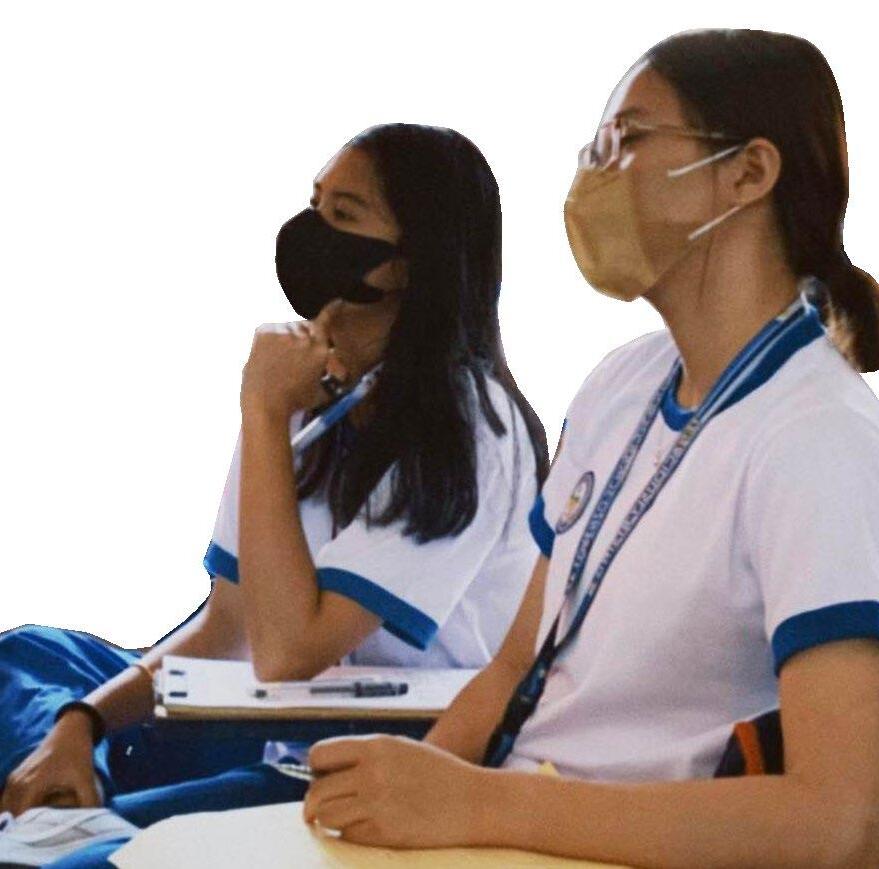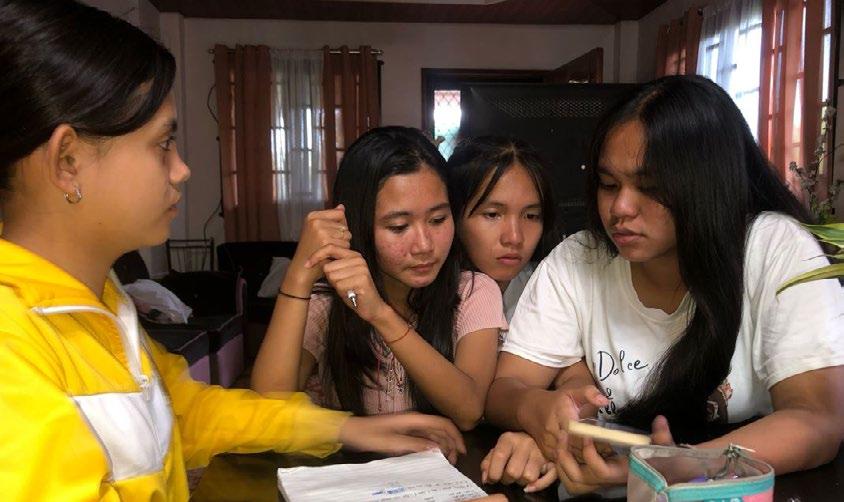
3 minute read
SLSPI MAXIMIZES ONLINE-FACE TO FACE, SWITCHING MODALITIES
from SCROLL 2023
by wayneklyde30

The students of St. Lorenzo School of Polomolok Inc. (SLSPI) continued to excel and hone their academic performance whilst utilizing different kinds of online tools such as: Office 365 – Teams wherein it is used as the platform for communication even during the strike of the world pandemic, COVID-19.
Advertisement
The pandemic that caused a widespread commotion all across the globe did not tumble the resiliency of the SLSPI community instead, strengthened their minds unto pouring and proving their flexibility to adapt into different environmental and social changes.
“Enrolling in an online class setting drained me but majority of my time were filled with peace of mind, knowing that I was still able to adapt and maintain my excellence. It took me plenty of time to adjust but at the end of the school year, it was paid off,” said Peavy Guellos of Grade 10 St. Mark.
After almost three years of the pandemic, its new journey starts off with students adapting to the new system of education, once again.

The SLSPIans were not the only one who had to adjust, even its faculty and staff had to take on the face-to-face system in order to efficiently teach its students.
Following the announcement of full face to face classes, a teacher’s evaluation was conducted not just to test the capacity of the students’ knowledge but so as the teacher’s efficiency of teaching.
The Senior High School Teacher, Rosie Sialana got a perfect mark from the School’s Principal and Administrator during Her class evaluation at Grade 12 STEM 1.

Principal Madonna Sua applauded Her excellence in teaching, “If all the teachers teach as good as you, SLSPI’s education would be beyond the expected standards,” She stated.
The mark Miss Rosie garnered gave Her the opportunity to perform an evaluation among the students of STEM 1 to show the other faculty members what the alternative yet, effective way of teaching.
The school continues to strive, living up to the spirited resiliency of St. Lorenzo Ruiz, providing the academia’s students the quality education regardless of the different circumstances they are put into.
Proud Thinking
Efrime Berden, TLE teacher of Grade 9, practices his students to evaluate their own lessons and at the same time trains them of mindsetting through self learning method in St. Lorenzo School of Polomolok on March 1.

Polomolok’s besting the recovery facility

Aside from knowing that Polomolok is the reigning ‘Cleanest and Greenest Place in South Cotabato’, we should also be aware that with the cooperation of the well-mannered citizens here in Polomolok, fortunately, the municipality is known as ‘Best Materials Recovery Facility’ - Barangay Poblacion LGU.
To recover recyclable materials from municipal solid waste, Materials Recovery Facilities were established in different communities of the Philippines where Polomolok was one of the municipalities chosen to have a Best Materials Recovery Facility.
Materials Recovery Facility or MRF is a Solid Waste Management plant that processes recyclable materials to be ssold to manufacturers as raw materials for a new product. MRF operations here in Polomolok started with the registration, inspection, and placement of segregated waste into the receiving area. Bulky materials were removed for disposal or sold to recycling facilities, while the rest of the wastes were placed on sorting tables for manual sorting. For mixed wastes, biodegradable materials were separated from recyclables and collected for processing into compost in another facility or loaded into trucks for disposal in a sanitary landfill. The separated biodegradables were not be stored within the roofed section of the MRF and were being transferred to a composting plant or disposal facility, preferably within the day.
These components were temporarily placed in a paved section within the MRF compound which can be easily loaded into waste collection trucks. For source-segregated waste, valuable recyclables, such as paper and carton, tin cans, metals, plastic and glass, were separated either manually or mechanically.
Lastly, the recovered recyclables were weighed and temporarily stored in designated bins. When sufficient quantities had been accumulated, tin cans were compacted and baled; plastic bottles were pierced, flattened, and baled; papers were stacked; and glasses were broken, then bulked up. The residual materials were temporarily stored and then disposed of in a sanitary landfill.
Records of the amount of incoming and outgoing waste were kept for monitoring purposes and for regular validation of the facility mass balance. Typical MRFs operate 8 hours a day Mondays through Saturdays.









